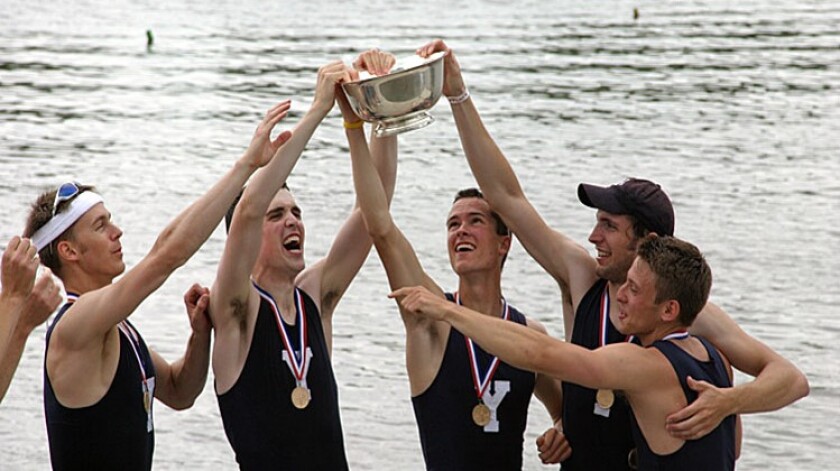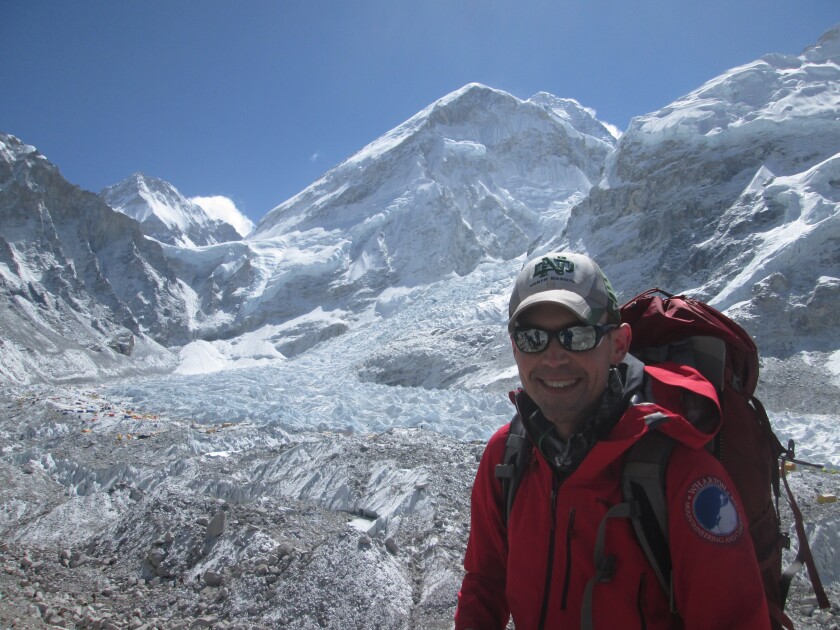Andrew Towne will soon get in a boat with five others at the southern tip of Chile.
It has no motor or sail, only oars.
ADVERTISEMENT
Their goal is to pull off a feat nobody in the world has ever accomplished: manually rowing a boat across the Drake Passage to Antarctica.
Towne, a 2000 Grand Forks Central graduate and Minneapolis resident, and his five teammates are expecting the 550-750 nautical-mile journey to take roughly 21 days beginning on Dec. 9, weather permitting.
They will be rowing 24 hours a day in three-man, 90-minute shifts.
It is being called "The Impossible Row" by Discovery Channel, which is documenting it.
Discovery Channel will provide real-time updates at discoverychannel.com/theimpossiblerow and on Twitter with the hashtag #theimpossiblerow. Discovery Channel also will air a full-length documentary sometime in 2020.
"It's the coldest, roughest water on earth," Towne said. "The Drake Passage is a notoriously furious stretch that will definitely test our limits. Sometimes, the swells are up to 50 feet high. We'll have to take that on with low temps, high winds and limited sleep. That's a bit daunting. . . or invigorating, depending on the way you look at it."
ADVERTISEMENT
Seasoned explorer and his crew are attempting a record-setting row through one of Earth's roughest waterways – the Drake Passage, this December on .
— Discovery (@Discovery)
Here’s what you need to know about :
From Everest to Antarctica
Extreme adventure is nothing new for Towne.
In 2017, he climbed Mt. Everest to complete the Seven Summits — the highest point on each continent.
It was a journey he started with Mt. Kilimanjaro in 2003 while studying abroad in Kenya. Towne then climbed South America’s Aconcagua (22,840) and Australia/Oceania's Carstensz Pyramid (16,023) in 2011, North America's Denali (20,320) and Europe's Elbrus (18,481) in 2012 and Antarctica's Vinson Massif (16,067) in 2015.
Because Carstensz Pyramid is located in Indonesia, a few consider Australia's Kosciuszko (7,310) — a significantly easier climb than Carstensz Pyramid — to be the seventh summit. Towne climbed Kosciuszko in 2011 for good measure.
According to a website that covers the Seven Summits, Towne was roughly the 150th person to complete all seven, including both Carstensz and Kosciuzko.
ADVERTISEMENT

After summiting the 29,035-foot Everest in 2017, Towne said he wasn't sure what was next for him, but it didn't take long for an idea to come into sight.
Through a mutual friend, Towne got in touch with Fiann Paul, an Icelandic ocean rower with numerous Guinness World Records. Paul shared his idea of rowing across the Drake Passage to Antarctica with Towne.
They initially thought about doing it last year, but decided to hold off for another year in order to better plan the trip.
For Towne, it's getting back to some of his old roots.
He was a national champion rower in college at Yale, but he hadn't seriously rowed since a regatta in 2009.
"This expedition is an outgrowth of many of my passions — namely challenging my own preconception of what's possible," Towne said. "I love being in the solitude of nature for extended periods of time, working together with a group of people for a common goal. I loved mountaineering, because it pushed your mental and physical limits in the wilderness."
ADVERTISEMENT

Rough conditions, little sleep
The trip will be grueling, even for a top athlete who has endured Everest's brutal conditions.
Three people will row at a time for 90 minutes, while the other three eat and rest. There's a spot in the bow for two people to sleep and a spot in the stern for a third.
After 90 minutes are up, the three will switch spots. So, for three weeks, the most they will sleep at one time will be 90 minutes. Usually, it will be less than that, because they will need to take some of those 90 minutes to eat and drink.
"Some of my co-workers who are young parents told me, 'Enjoy!'" said Towne, who works for an international consulting group based out of the Twin Cities.
The rowers have partnered with Standard Process for high-quality nutritional supplements and Mountain House for freeze-dried meals that they will be eating on the trip.. They also will have a water-making machine on board.
ADVERTISEMENT
Towne has been training at a gym with an ergometer.
The six men met in Scotland in August to take the boat out for a test run out on the Atlantic Ocean.
"It was really good," Towne said. "Even in a short, 24-hour period, we had plenty of horrible weather, cold and sleep deprivation. It was good to learn how to maintain energy over the course of multiple shifts."
Towne also said he learned how to eat properly.
"In the mountains, I can munch on a bar while hiking and eat a big meal at the end of the day," he said. "Ocean rowing is quite different. The athletic undertaking is nonstop. You have to make sure your body is re-energizing constantly. You can't eat while you're rowing, because you need both your hands to row. There's no big meal at the end of the day, because it won't be fully digested before you have to get up and row. You have to constantly be re-energizing. That was probably the best thing I learned during our training row."
Some of Towne's teammates are already extremely accomplished ocean rowers.
Paul, Cameron Bellamy and Jamie Douglas-Hamilton rowed across the Indian Ocean, which took more than 50 days. Their other teammates are Colin O'Brady, a college swimmer at Yale who has climbed the Seven Summits, and John Petersen, a rower at Yale.
ADVERTISEMENT
"My confidence that we can pull this off with style and safety comes a lot from my upbringing in North Dakota," Towne said. "In North Dakota, let's face it. It often gets as cold as Antarctica. And everything I've ever experienced in Grand Forks — whether it was the flood or other challenges — is that you roll up your sleeves and get it done. A little bit of hard work and good attitude will carry us far."









